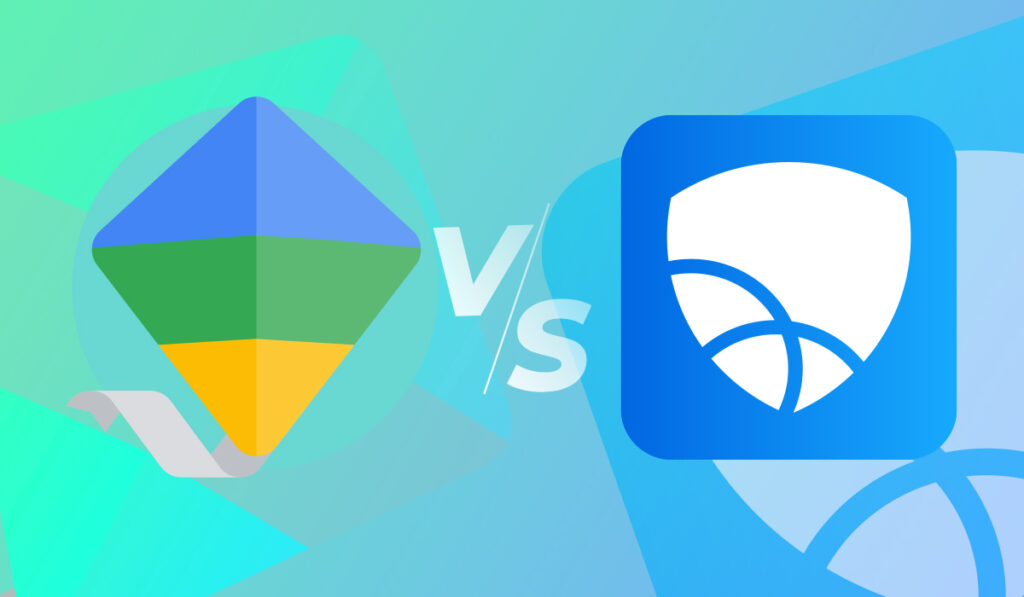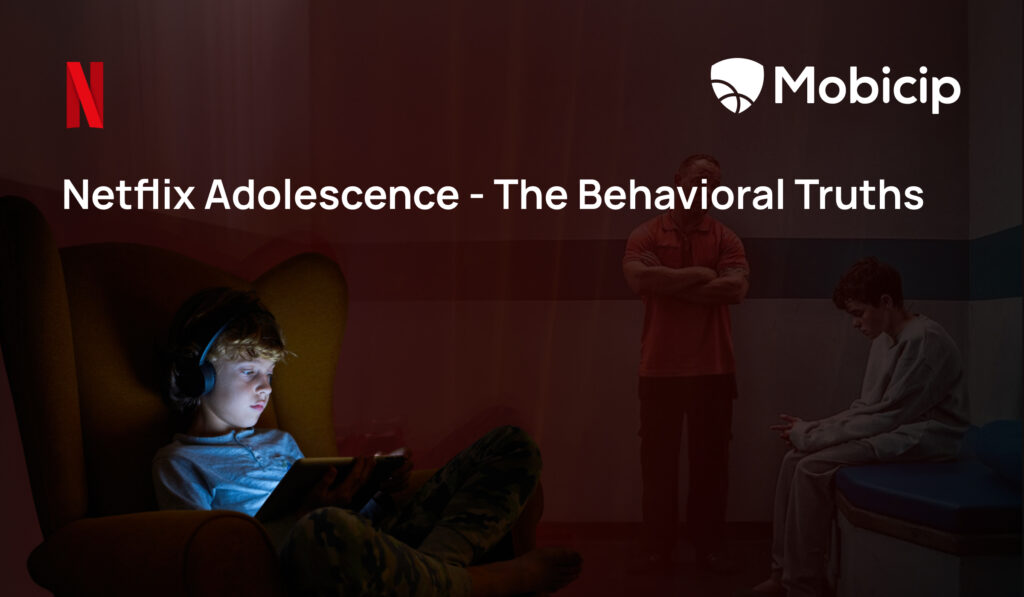How Do Kids Bypass Google Family Link?
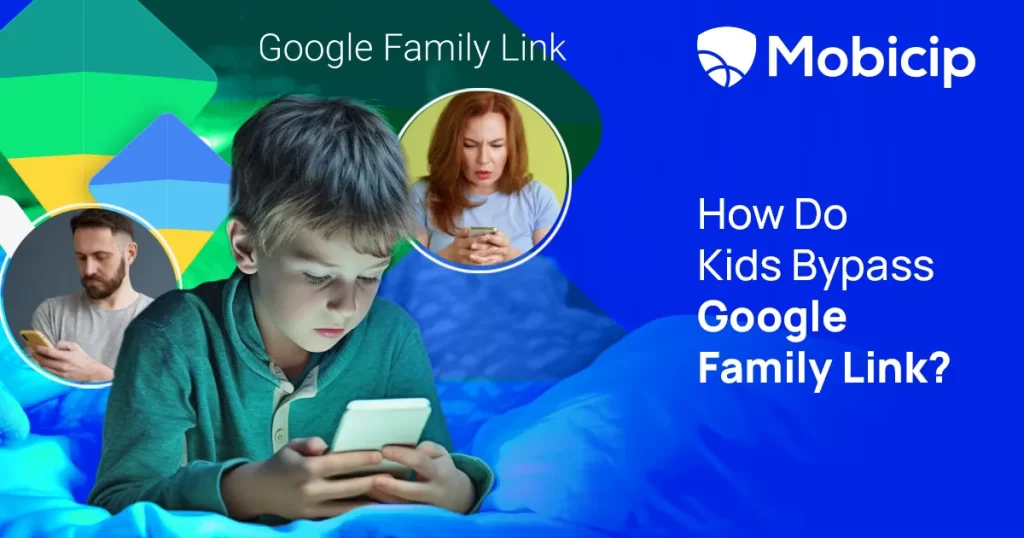
Google Family Link is a great tool for managing your child’s digital life, helping you set limits, approve apps, and monitor activity. But tech-savvy kids often find clever ways to bypass it. This essay explores how kids do it—and how Mobicip can offer stronger, more reliable protection in comparison.
Why is Digital Protection Important for Kids?
Not long ago, children played outside until dusk, enjoying games like hopscotch and hide-and-seek with friends. Parents watched from a distance, worrying only when the sun went down. Today, children explore vast digital worlds filled with virtual playgrounds and endless streams of information—often unseen by parents.
The digital revolution has introduced a new layer of complexity to the instinctive task of protecting our young. As adults, we grapple with questions that previous generations could scarcely have imagined: How much screen time is too much? What content is appropriate for my child’s age? What are the parental controls that help in fostering child safety online?
A positive digital guardian (or parent) strives to nurture, empower, and guide their wards/children in navigating the complexities of the online world. They recognize their children as individuals with unique identities and perspectives, valuing their autonomy while providing necessary guidance and support. Positive digital parenting sets boundaries that help children build skills and resilience for the digital world.
Fortunately, digital tools such as Google Family Link and Mobicip are valuable resources for parents seeking to navigate these challenges. This blog will explore how these tools facilitate positive digital parenting practices and empower parents to create a safe and enriching digital environment for their children.
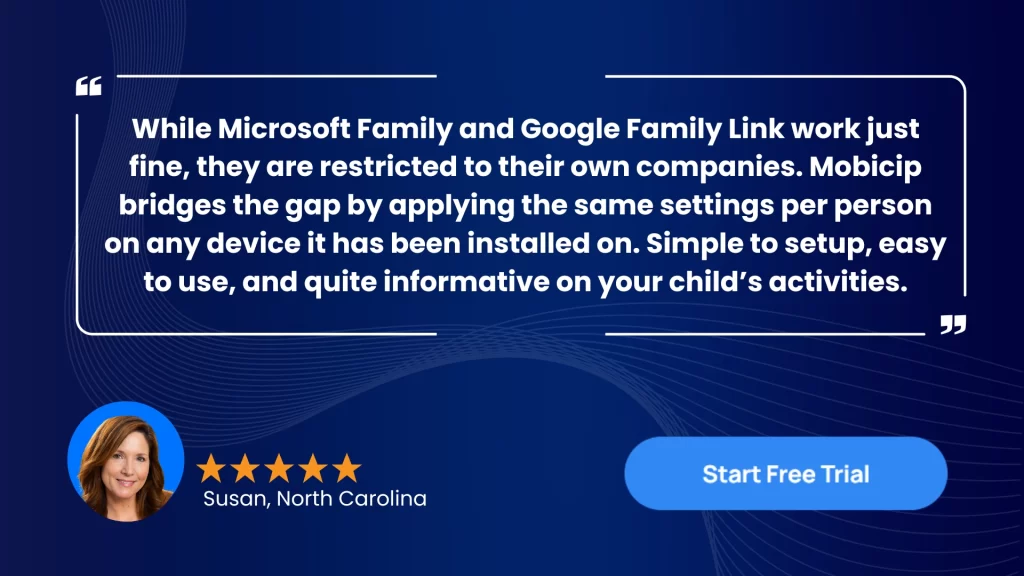
What is Google Family Link?
Google Family Link is a free app designed for Android and iOS devices. It allows parents to oversee various aspects of their child’s online experience, including device location, screen time, and privacy settings. Once installed on both the parent’s and child’s devices, the app enables remote approval or blocking of apps on the child’s device, granting parents control over the digital content accessible to their children.
Family Link helps parents understand their child’s digital habits and device use. Parents can promote healthy screen time habits by ensuring their child balances their usage across different apps and take regular breaks. While Family Link does not directly block inappropriate content, it empowers parents to curate their child’s digital environment by approving or rejecting new apps and leveraging filtering options available in certain apps such as Google Search and the Chrome web browser.
How Kids Bypass Family Link
Children are known for outsmarting parental controls! They have a built-in “tech loophole detector” that activates when you think you’ve outsmarted them. Here are some common methods children employ to circumvent parental controls in Google Family Link:
Configuring the Accessibility Menu: Within Android settings, children can activate an Accessibility Menu intended to assist users with disabilities. However, children have discovered that this menu can be used to bypass time limits set by parents. Enabling the Accessibility Menu lets children reopen apps after the device locks, bypassing screen time limits.
Creating Secure Folders: Children can access a secure folder feature that Google Family Link doesn’t restrict on Samsung devices. A secure folder lets children add and access files or apps without parental restrictions. Even on non-Samsung devices, children can utilize similar features like Safe Folders to hide screenshots or images from their parents.
Clearing Google Store Data: While Google Family Link cannot be uninstalled directly, children can bypass parental controls by clearing data for the Google Play Store. This action removes parental control settings previously established, enabling children to delete the Google Family Link app or restrict its access to data without requiring the four-digit PIN. Unfortunately, there are limited workarounds for this issue aside from installing additional third-party security apps.
Parental Countermeasures
It’s a timeless battle of wits between parents armed with the latest digital defences and pint-sized Houdinis with an uncanny ability to slip through the cracks. As parents, we can’t help but marvel at their ingenuity, even as we frantically search for new ways to stay one step ahead. Effective app management lets parents monitor and control usage, creating a safer, healthier online environment for children. Here are some possible countermeasures.
Safe Setup
Proper configuration during the initial setup phase is crucial for mitigating potential bypass attempts. Parents should periodically customize the following settings and ensure that their customization remains intact:
- Controls on Google Play, including purchase and download approvals and content restrictions
- website restrictions on Google Chrome
- filters for Google Search
- Google Assistant settings
- app permissions and restrictions from Google Play, and
- location settings on Android devices
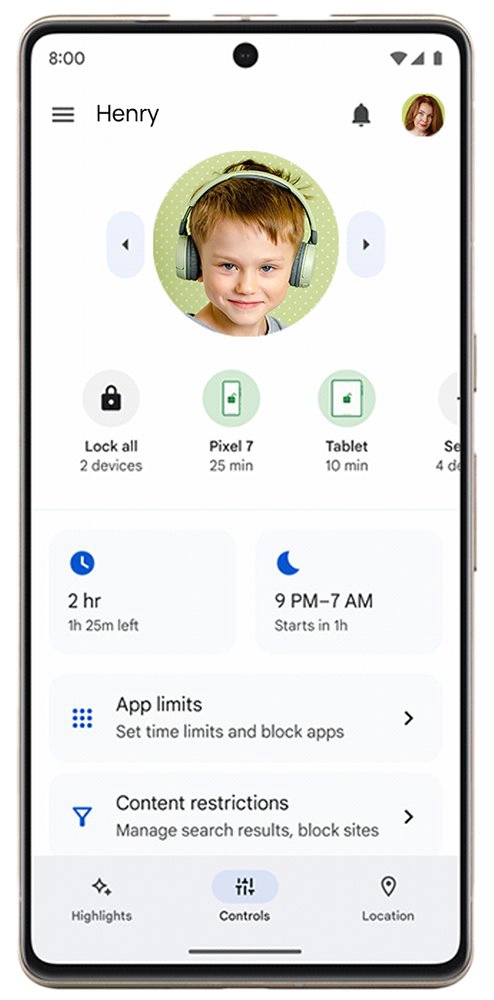
To access these settings directly within the Family Link app, follow these steps:
- Open the Family Link app, select your child’s profile
- Tap on “Controls” -> “Account Settings” -> “Privacy settings” -> “Account data settings“
- Follow the on-screen instructions to make any necessary changes.
Setting up a 2-Step Verification enabled for their account is a good idea. However, if they have tampered with this and 2-Step Verification is disabled, both you and your child will receive a notification email once this happens.
Advance Settings
Google Family Link offers an array of advanced settings and controls, empowering parents to impose stringent restrictions and enhance digital supervision tailored to their family’s unique needs. Within Google Family Link, SafeSearch is a prominent feature that blocks explicit content from search results on the Chrome browser, including images. This default setting can only be altered by parents. Additionally, SafeSearch customization options enable parents to filter explicit images, texts, and links or blur explicit images while allowing explicit texts and links. Parents can also utilize content restrictions on Chrome to create a list of approved websites.
Family Link automatically disables Incognito Mode on Chrome where parental monitoring is active, preventing children from bypassing restrictions. Notably, parents receive immediate notifications of any changes made to settings by their child, maintaining oversight and control.
Family Link facilitates managing app permissions and sharing settings, including location and webcam access, from the parent app. Parents can set daily device usage limits and restricted times, adjust limits incrementally, and even apply different settings for weekdays versus weekends. The Downtime feature allows parents to schedule device lockouts during specified periods, ensuring healthy screen time habits. App supervision lets parents set limits, restrictions, or always-access permissions for individual apps.
Family Link extends content control to Google Play, enabling parents to filter app installations based on content ratings and require approval for in-app purchases. Moreover, parents can regulate YouTube viewing by restricting access to YouTube Kids for children under 12 and tailoring content by age.
Google Family Link – First Level Protection
Google Family Link serves as an entry-level parental control app. It lacks the breadth and depth of features, user-friendliness, and compatibility compared to competitors. Its web filtering, time supervision, and location tracking functionalities are notably inadequate. The app loses effectiveness for children over 13, lacks iOS and non-Chromebook kids apps, and its web version is underwhelming.
This is where Parental control tools like Mobicip come into the picture.
Mobicip: A Superior Alternative
While Google Family Link provides a comprehensive suite of parental control features, some parents may seek more advanced solutions to address the evolving challenges of digital parenting. Mobicip is a superior alternative that offers advanced features that surpass the capabilities of Family Link.
Mobicip’s Role in Enhancing Digital Safety
One major advantage of Mobicip is that it gives parents more control over their children’s digital activities with customizable schedules. Parents can easily create tailored schedules, ensuring screen time fits their child’s daily routines and priorities. This flexibility is missing in Google Family Link, limiting parents’ ability to adjust controls to their child’s needs.
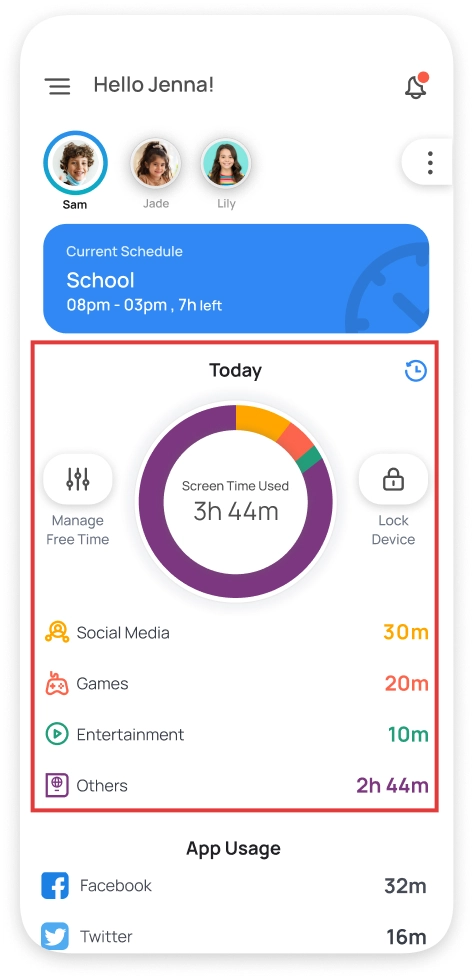
Mobicip also offers a more extensive range of web and app filtering options than Google Family Link, which allows parents to exercise precise control over the content accessible to their child. Mobicip empowers parents to blocklist or allow specific content categories and individual apps, providing a finer level of granularity compared to Google Family Link.

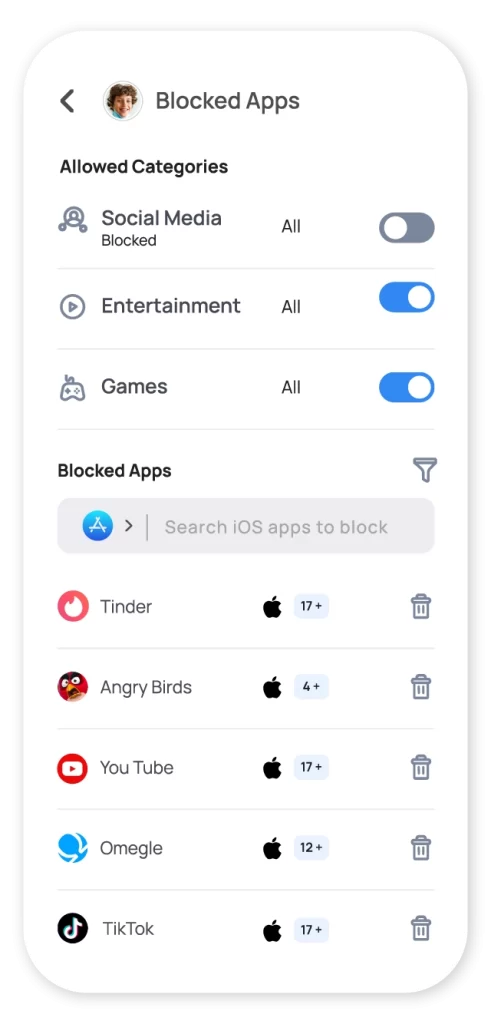
Additionally, Mobicip’s monitoring capabilities extend beyond basic device usage to encompass popular social media platforms like Facebook, Instagram, and Snapchat. By offering insights into their child’s online interactions, Mobicip enables parents to stay informed and proactively address potential concerns.
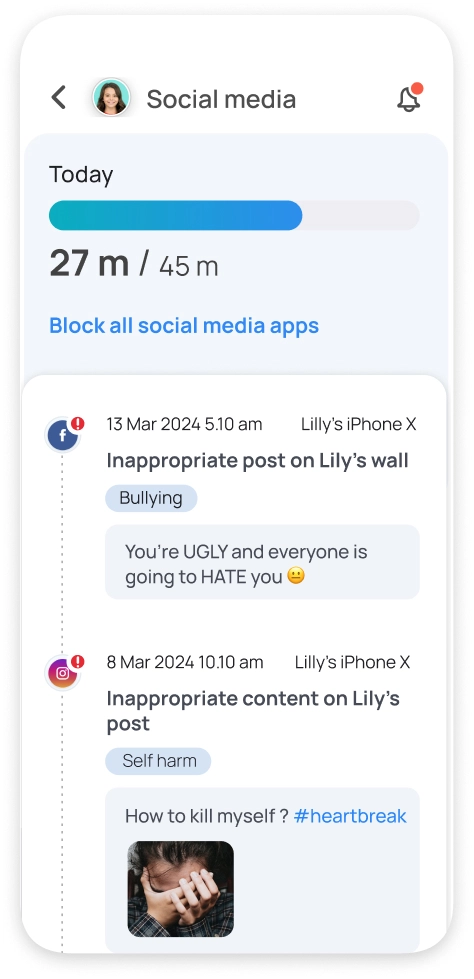
Furthermore, Mobicip allows parents to track their family’s location and create geo-fences around school or a friend’s home to be alerted when their child reaches the location.
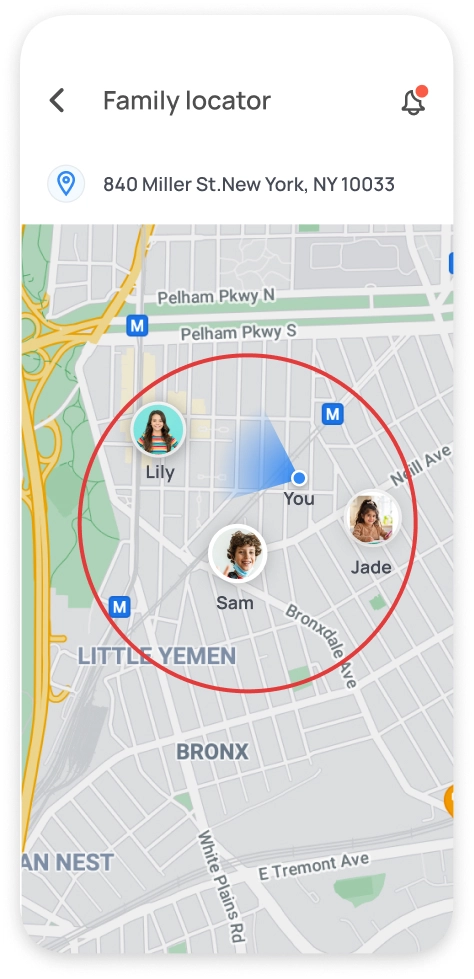
Thus, while both Mobicip and Google Family Link are essential tools for digital parenting, Mobicip’s advanced features, customizable schedules, and comprehensive monitoring capabilities make it a superior choice for parents seeking enhanced digital safety and supervision for their children.
The Parental Dilemma: Control vs. Autonomy
While tools like Mobicip indeed offer parents better control over their children’s digital habits, the eternal question persists – what constitutes a healthy level of monitoring that keeps the child safe without suffocating them with helicopter parenting? Excessive control can suffocate a child’s sense of autonomy and hinder their ability to navigate the digital world responsibly. Overbearing micromanagement may erode children’s confidence and impede their ability to make independent decisions. Overly restrictive parental controls can sow seeds of resentment and rebellion in children. This drives them to seek loopholes to evade imposed restrictions.
Achieving the delicate balance between control and autonomy is no simple task. Parents must tread carefully. They must find a middle ground between shielding their children from harm and allowing them to explore and learn from their digital experiences. Alongside tools like Mobicip, fostering open communication and setting a positive example play vital roles in responsible digital parenting. By fostering trust and open dialogue, parents can help children navigate the digital world responsibly.
Ultimately, effective digital parenting entails creating a supportive and empowering environment where children can safely explore and learn, guided by appropriate boundaries and parental guidance. Using tools like Mobicip, parents can set filters, time limits, and device controls to keep kids safe online.
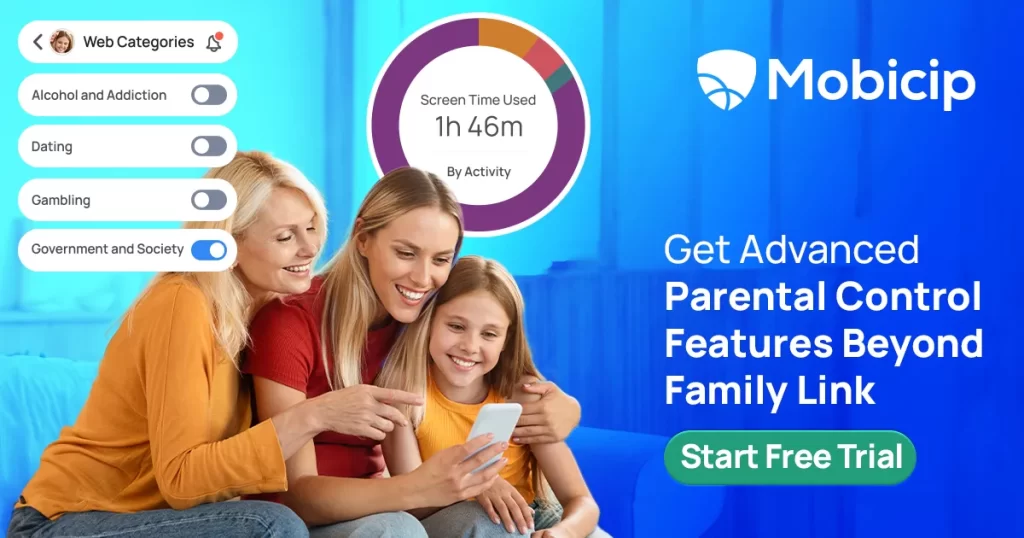
FAQs
How can Mobicip help if Family Link is bypassed?
Mobicip offers advanced features such as customizable schedules, extensive web and app filtering options, and social media monitoring capabilities. With Mobicip, parents can maintain digital boundaries and keep kids safe online, even if Family Link is bypassed.
What are the consequences of bypassing Family Link?
Bypassing Family Link can have serious consequences, both in terms of safety and trust. By evading parental controls, children may expose themselves to inappropriate content, online predators, or cyberbullying. Moreover, bypassing Family Link undermines the trust between parents and children, eroding the foundation of open communication and mutual respect.
What should parents do if they suspect their child has bypassed Family Link?
If parents suspect their child has bypassed Family Link, addressing the issue promptly and constructively is essential. Parents should talk openly with their children about digital boundaries, reinforce Family Link settings, and use tools like Mobicip to prevent future bypass attempts. Finally, parents should emphasize the importance of responsible digital behavior and set a positive example for their children.



